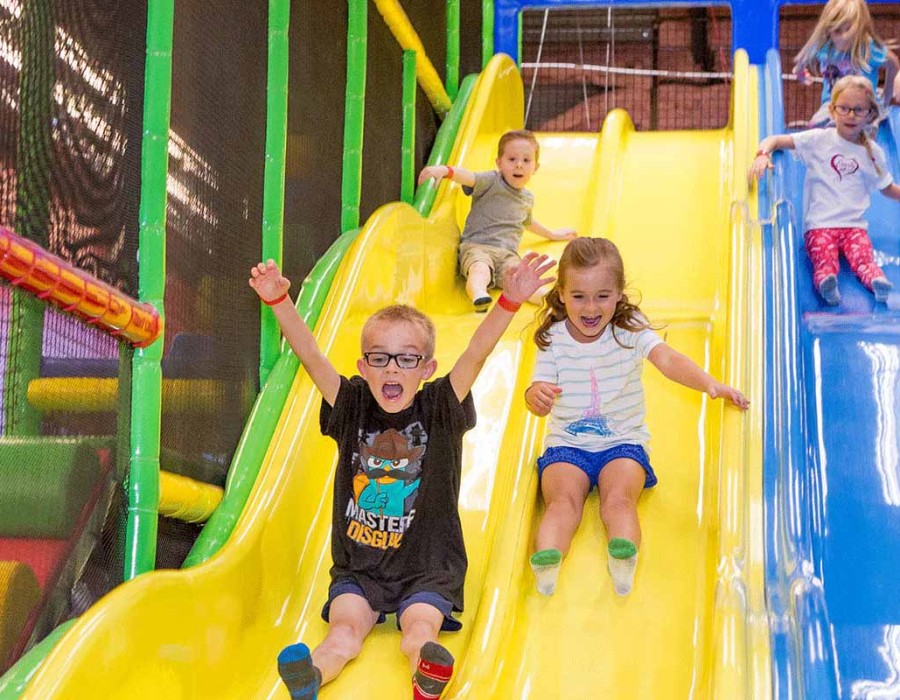In today's fast-paced and technologically driven world, children often find themselves immersed in screens and sedentary activities. As a result, the importance of providing them with opportunities for physical play and exploration cannot be overstated. Indoor play areas have gained significant popularity as safe and stimulating environments for children to engage in active play. Central to these spaces are the vibrant and versatile indoor play area equipment, which not only entertain but also contribute to children's physical, social, and cognitive development. This article delves into the fascinating world of indoor play area equipment, highlighting its benefits and exploring some popular options.
Promoting Physical Activity:
One of the primary advantages of indoor play area equipment is their ability to promote physical activity. Climbing structures, slides, obstacle courses, and trampolines are just a few examples of equipment that encourage children to engage in active play. By jumping, crawling, climbing, and sliding, children develop motor skills, coordination, and balance. Regular physical activity also helps to enhance cardiovascular health, strengthen muscles, and improve overall fitness levels.
Enhancing Social Skills:
Indoor play areas provide children with a unique opportunity to interact with their peers, fostering the development of social skills. Equipment like ball pits, interactive games, and group play structures facilitate collaboration, communication, and teamwork. As children navigate these environments together, they learn to share, take turns, negotiate, and resolve conflicts. These social interactions help build confidence, empathy, and emotional intelligence, laying a solid foundation for their future relationships.
Stimulating Cognitive Development:
Indoor play area equipment is not just about physical play; it also plays a crucial role in stimulating cognitive development. Many structures feature puzzles, mazes, and educational games that challenge children's problem-solving abilities, critical thinking skills, and spatial awareness. By engaging with these activities, children enhance their cognitive flexibility, logical reasoning, and creativity. Furthermore, the sensory experiences provided by certain equipment, such as sensory tables or water play areas, can stimulate exploration and stimulate early learning.
Catering to Diverse Interests:
Indoor play area equipment comes in a wide range of designs and themes, catering to diverse interests and preferences. Some children may gravitate towards imaginative play areas like dollhouses, kitchens, or construction zones, allowing them to explore their creativity and role-playing skills. Others may find joy in more physical activities like rock climbing walls, ziplines, or trampolines. By offering a variety of options, indoor play areas ensure that all children, regardless of their interests or abilities, can find activities that resonate with them.
Safety Considerations:
Indoor play areas are designed with safety as a top priority. Equipment undergoes rigorous testing to ensure compliance with safety standards, minimizing the risk of accidents and injuries. Soft padding, non-slip surfaces, and rounded edges are incorporated into the designs to provide a secure environment for children to play freely. Regular maintenance and inspections further ensure that the equipment remains in optimal condition.
Indoor play area equipment holds immense potential for fostering holistic development in children. By promoting physical activity, enhancing social skills, stimulating cognitive growth, and catering to diverse interests, these spaces provide a wealth of benefits. Parents, educators, and caregivers recognize the importance of providing children with opportunities for active play, away from screens and sedentary lifestyles. As indoor play areas continue to evolve, incorporating innovative and engaging equipment, they remain a cherished space where children can explore, learn, and have fun in a safe and controlled environment.
For More Info:-






Comments